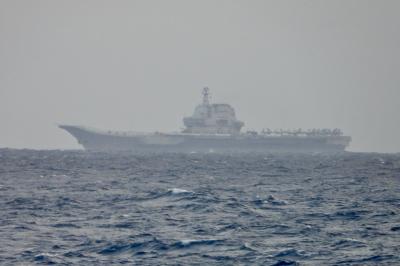A new forecast on Friday showed US economic rescue efforts would push the budget deficit to the biggest percentage of the economy since 1945, as EU officials pledged aid to Eastern Europe but balked at boosting their own stimulus efforts.
The Congressional Budget Office (CBO) said its latest budget deficit estimate for this fiscal year, which ends on Sept. 30, would amount to US$1.845 trillion, or 13.1 percent of the country’s entire economic output.
The new projections were based on a sweeping US$3.55 trillion multi-year budget proposed by US President Barack Obama’s administration to Congress last month.
Obama has acknowledged the size of his budget’s US$1.752 billion deficit this year would require “some hard choices” on spending priorities.
The White House said the new CBO forecasts would not trim the Democratic president’s objectives or thwart his plan to halve the shortfall by 2013.
“None of the numbers today changed either the president’s objectives or his ability to achieve that deficit reduction,” White House spokesman Robert Gibbs said.
Republicans grabbed the ammunition to push back against Obama’s massive budget package that teams tax cuts and heavy spending.
“It’s worse than even the most pessimistic predictions for this budget,” Senate Republican Leader Mitch McConnell said. “If there was ever any doubt that the administration’s budget spends too much, taxes too much and borrows too much, it’s gone.”
The CBO’s red ink estimate would dwarf the nation’s record fiscal budget deficit last year of US$459 billion, which amounted to a relatively small 3.2 percent of GDP.
The agency estimated that for the current fiscal year, spending would soar 34 percent from the past year to US$4.004 trillion and revenues would plunge 15 percent to US$2.159 billion.
The deficit would remain high in the next fiscal year, at US$1.379 billion, before falling below the US$1 trillion mark in 2011, to US$970 billion.
Deficits then would shrink to about 2 percent of GDP by 2012 and remain steady through 2019.
Meanwhile, EU leaders pledged billions to support Eastern Europe and the IMF, but insisted they would not spend more on their own economies despite a record slump in industrial output.
Official figures on Friday showed industrial output in the 16 nations using the euro slumped 3.5 percent in January from December and slumped 17.3 percent over 12 months.
The slide, the sharpest on record, showed that the downturn in the industrial sector gathered pace at the start of the year.
In the 27-nation EU, industrial output fell 2.9 percent in January over one month and 16.3 percent over a year.
With some 4.5 million European jobs at risk this year, European leaders said current stimulus efforts must be allowed to work first before any more is done given the strain on public finances.
They agreed at a summit in Brussels to double loans available to eastern Europe to 50 billion euros (US$68 billion) and to add 75 billion euros to the IMF’s coffers.
Europe wants to double the resources of the IMF to US$500 billion, while Washington has suggested US$750 billion.

AIR SUPPORT: The Ministry of National Defense thanked the US for the delivery, adding that it was an indicator of the White House’s commitment to the Taiwan Relations Act Deputy Minister of National Defense Po Horng-huei (柏鴻輝) and Representative to the US Alexander Yui on Friday attended a delivery ceremony for the first of Taiwan’s long-awaited 66 F-16C/D Block 70 jets at a Lockheed Martin Corp factory in Greenville, South Carolina. “We are so proud to be the global home of the F-16 and to support Taiwan’s air defense capabilities,” US Representative William Timmons wrote on X, alongside a photograph of Taiwanese and US officials at the event. The F-16C/D Block 70 jets Taiwan ordered have the same capabilities as aircraft that had been upgraded to F-16Vs. The batch of Lockheed Martin

GRIDLOCK: The National Fire Agency’s Special Search and Rescue team is on standby to travel to the countries to help out with the rescue effort A powerful earthquake rocked Myanmar and neighboring Thailand yesterday, killing at least three people in Bangkok and burying dozens when a high-rise building under construction collapsed. Footage shared on social media from Myanmar’s second-largest city showed widespread destruction, raising fears that many were trapped under the rubble or killed. The magnitude 7.7 earthquake, with an epicenter near Mandalay in Myanmar, struck at midday and was followed by a strong magnitude 6.4 aftershock. The extent of death, injury and destruction — especially in Myanmar, which is embroiled in a civil war and where information is tightly controlled at the best of times —

China's military today said it began joint army, navy and rocket force exercises around Taiwan to "serve as a stern warning and powerful deterrent against Taiwanese independence," calling President William Lai (賴清德) a "parasite." The exercises come after Lai called Beijing a "foreign hostile force" last month. More than 10 Chinese military ships approached close to Taiwan's 24 nautical mile (44.4km) contiguous zone this morning and Taiwan sent its own warships to respond, two senior Taiwanese officials said. Taiwan has not yet detected any live fire by the Chinese military so far, one of the officials said. The drills took place after US Secretary

THUGGISH BEHAVIOR: Encouraging people to report independence supporters is another intimidation tactic that threatens cross-strait peace, the state department said China setting up an online system for reporting “Taiwanese independence” advocates is an “irresponsible and reprehensible” act, a US government spokesperson said on Friday. “China’s call for private individuals to report on alleged ‘persecution or suppression’ by supposed ‘Taiwan independence henchmen and accomplices’ is irresponsible and reprehensible,” an unnamed US Department of State spokesperson told the Central News Agency in an e-mail. The move is part of Beijing’s “intimidation campaign” against Taiwan and its supporters, and is “threatening free speech around the world, destabilizing the Indo-Pacific region, and deliberately eroding the cross-strait status quo,” the spokesperson said. The Chinese Communist Party’s “threats